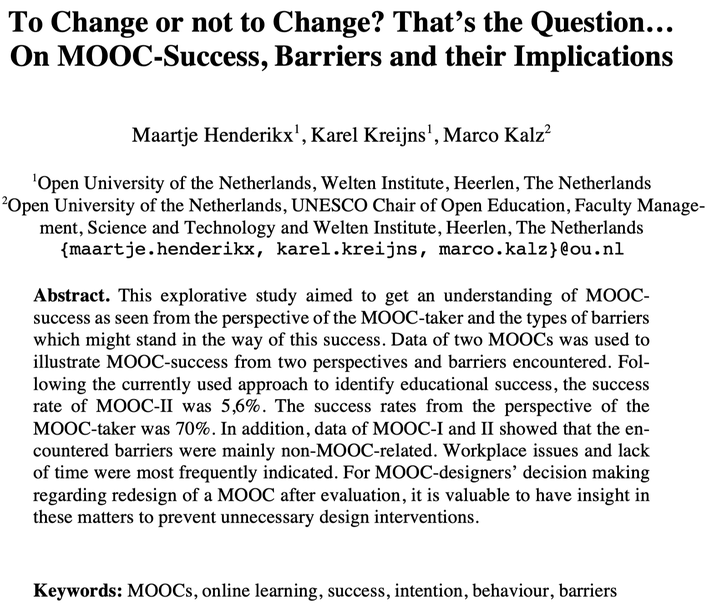To Change or not to Change? That’s the Question… On MOOC-Success, Barriers and their Implications

Abstract
This explorative study aimed to get an understanding of MOOC-success as seen from the perspective of the MOOC-taker and the types of barriers which might stand in the way of this success. Data of two MOOCs was used to illustrate MOOC-success from two perspectives and barriers encountered. Fol-lowing the currently used approach to identify educational success, the success rate of MOOC-II was 5,6%. The success rates from the perspective of the MOOC-taker was 70%. In addition, data of MOOC-I and II showed that the en-countered barriers were mainly non-MOOC-related. Workplace issues and lack of time were most frequently indicated. For MOOC-designers’ decision making regarding redesign of a MOOC after evaluation, it is valuable to have insight in these matters to prevent unnecessary design interventions.
Henderikx, M., Kreijns, K., & Kalz, M. (2017). To change or not to change? That’s the question… On MOOC-success, Barriers and their Implications. In C. Delgado Kloos, P. Jermann, M. Pérez-Sanagustín, D. T. Seaton, & S. White (Eds.), Digital education: Out to the world and back to the campus: 5th European MOOCs Stakeholders Summit, EMOOCs 2017, Madrid, Spain, May 22-26, 2017 Proceedings (pp. 210-216). Springer. https://doi.org/10.1007/978-3-319-59044-8_25